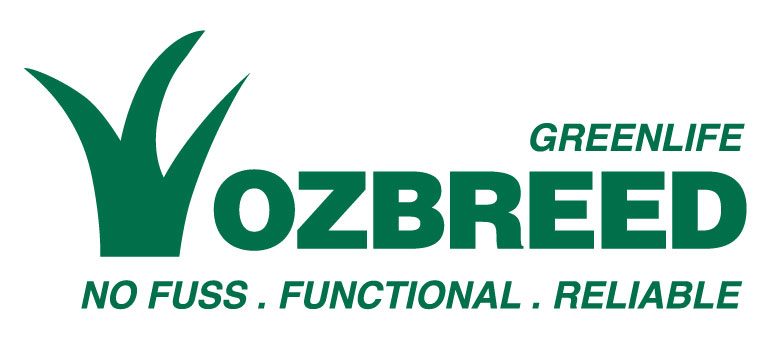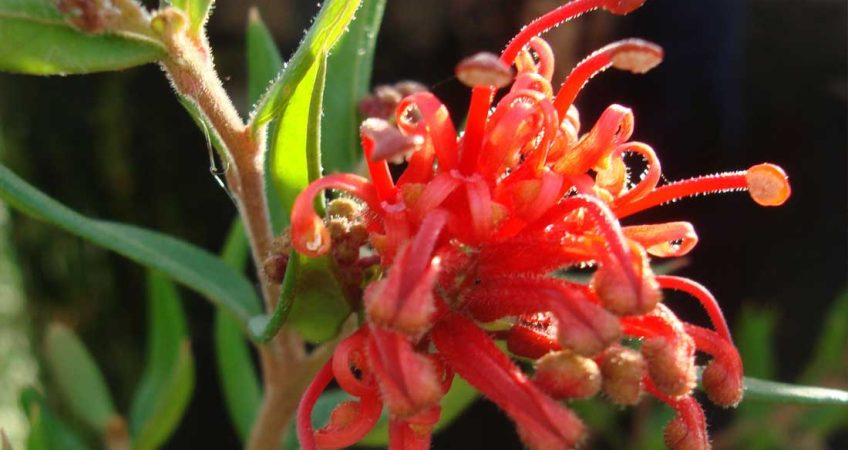Grevilleas, native to Australia, offer an exotic appeal and unique beauty to New Zealand gardens. In this article, we delve into the intriguing world of grevilleas, their characteristics, nutritional needs, and how breeding has made it possible for them to thrive in New Zealand. We aim to provide valuable information for experienced home gardeners, landscape architects, council decision-makers, and professional landscape experts interested in adding a touch of Australian beauty to their gardens.
This is Cherry Cluster™ Grevillea rhyolitica x juniperina ‘TWD01’ PBR.

II. What Are Grevilleas?
A. Description of Grevilleas
Grevilleas, belonging to the Proteaceae family, are a diverse group of plants, ranging from ground covers and shrubs to large trees. Known for their intricate, spider-like flowers, these plants add colour and texture to any garden.
Their inflorescences typically occur on the tips of branches, and come in a wide range of sizes.
B. Origin and Natural Conditions in Australia
Native to Australia, grevilleas thrive in various climates, from coastal regions to mountainous areas. They can withstand poor soils and harsh conditions, making them hardy additions to any landscape.
The poor soils of their native habitats is perfect for them. Their root system is particularly adept at sourcing phosphorous, which is an important macro nutrient for plants, often lacking in these soils.
C. Breeding and Adaptation in NZ
Thanks to selective breeding, numerous cultivars of grevilleas have been developed that can adapt and flourish in New Zealand’s varied climates. The breeding efforts have focused on enhancing disease resistance, extending flowering periods, and creating a wider range of floral colours and plant habits.
III. Caring for Grevilleas in NZ
A. Correct Positioning and Soil Type
Grevilleas prefer a sunny position in the garden with well-drained soil. They can tolerate a range of soil types, including sandy, loamy, and clay, provided the soil is well-drained.
B. Sunlight, Water and Nutrient Requirements
These plants require full sun to part shade and regular watering during dry periods. They are adapted to nutrient-poor soils, but a slow-release fertiliser specifically designed for Australian native plants can enhance their growth and flowering.
C. Pruning Techniques
Pruning grevilleas includes removing spent flower heads, removing any dead or diseased wood, as well as crossing and competing branches. You can prune for a bushy hedge shape by pruning to a leaf bud, or promote a natural growth shape by pruning to a fork.
When pruning for natural shape, make sure the branch you’re cutting to is large enough. You should cut to a branch that is no less than 1/3 of the diameter of the cut being made at that fork.
Some people say it’s best to prune lightly and regularly rather than drastically. Others prefer to leave their plants for several years and then give them a hard cut just before the growing season. This really depends on what your goals for the plant are.
V. Conclusion
Grevilleas are an exotic and beautiful addition to New Zealand gardens. Their unique flowers, hardy nature, and diverse forms make them a favourite among gardeners and landscape architects. While they require some care in terms of positioning, soil type, sunlight, water, and nutrients, their beauty and uniqueness make the effort worthwhile.
We encourage you to consider adding grevilleas to your garden or landscape, and experience a touch of Australian wilderness in your own backyard.

